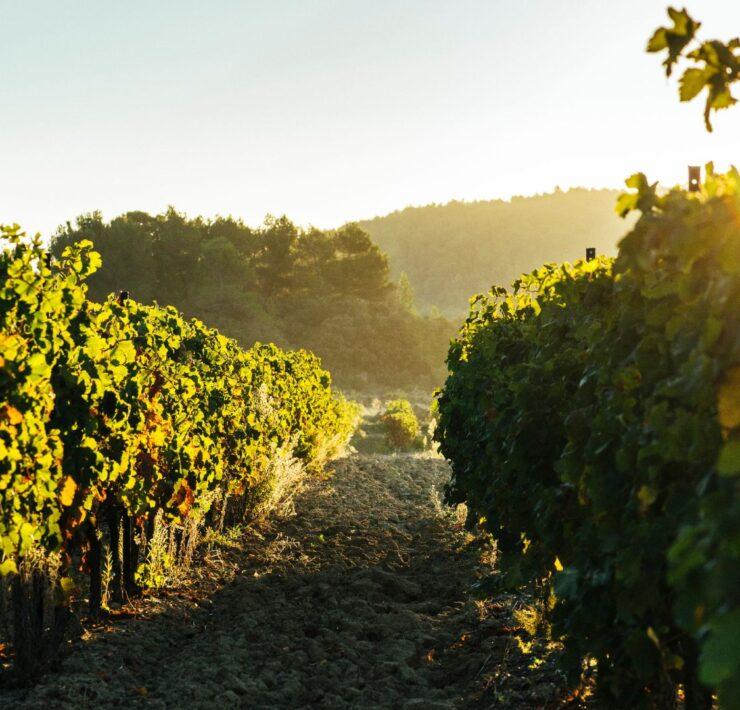The moon may merely be a familiar presence in the night sky for many people, but for biodynamic farmers, it serves as an important guide. Biodynamic agriculture is based on the philosophy of Rudolf Steiner and relies on foundational tenets that dictate how to grow crops in balance with the surrounding ecosystem. The approach is unequivocally holistic and seeks harmony between all facets of a farm.
Before grapes even make it to the cellar, wine depends on an equilibrium of factors such as soil, water drainage, climate, and harvest date. With all its nuances, from special preparations to timelines related to lunar calendars, the concept of biodynamic wine can be tricky to grasp.
Viticulture From a Biodynamic Approach
Biodynamic viticulture prioritizes transparency and dedication to tending vines according to specific cycles. While biodynamic preparations are a whole other can of worms (or cow horn of manure), the significance of the moon’s rhythms is of notable interest.
Since this celestial body governs ocean tides with its gravitational force, it stands to reason that it affects water in other ways. Water in plant root systems moves via osmosis, causing sap to rise and fall. Vintners can apply these patterns in their favor by planting, harvesting, and pruning at particular stages of the cycle. If the idea sounds a little too new-age, consider that the Farmers’ Almanac from 1818 highlights the value of gardening in tandem with the moon’s phases.
Identifying Key Stages
In the early 1960s, Maria Thun developed a biodynamic calendar with important cycle periods, guiding growers through root, leaf, flower, and fruit days. These four stages relate to the elements: earth, water, air, and fire, respectively. Each interval represents the time frame best suited for specific agricultural tasks. In the vineyard and cellar, this relates to activities such as pruning, harvesting, racking, and tasting wine.
Marta Casas, the winemaker at Parés Baltà Winery in Penedès, Spain, explains that “the moon’s waxing and waning phases are the primary drivers.” In the former, the sun shines increasing light on the moon as it expands. The moon shrinks into darkness in the latter, essentially closing in on itself.
This extends to the movement of water; as the moon waxes, sap is high in the plant. Casas explains that it would be damaging to prune vines during this stage unless they were fully dormant. Similarly, processes in the cellar that require moving wine, such as racking it from one vessel to another, are best done during the moon’s waning phase to retain aromas. On the flip side, Casas comments, “Reductive wines requiring oxygenation should be handled during the waxing phase to harness this state of opening.”
The Importance of Astronomy and Common Sense
Casas breaks it down further, placing the calendar in an astronomical context. As the moon orbits the earth during its 28-day cycle, it crosses 12 zodiac constellations. She stresses that the moon’s orbit and biodynamic practices are related to astronomy, not astrology, “the calendar is physical, mathematical, exact.”
Casas quickly notes that integrating the calendar into viticultural practices requires common sense. She emphasizes that one must not live as a prisoner of its guiding principles. Instead, she assesses both the environment and calendar and makes decisions accordingly.
In her opinion, “if you live with rules that are strict … and if you have 200 hectares like us [Parés Baltà], imagine that [there are] only three days per month I can prune.” She points out, “If we are not there, nature is very clever, very smart, and perfectly in harmony.” Ultimately, the farmer’s role is to make decisions that can assist the natural processes.
Tasting Wine Throughout the Lunar Stages
Casas asserts that comparative analysis of the same wine at different phases of the lunar cycle — particularly at the lunar nodes, which occur when the moon crosses the sun’s path twice a month — yields notable tasting differences. She comments, “We have seen this effect with an exhaustive technical taste [of] one wine with different tasters with these critical days, and comparing with the good days.”
Fruit and flower days tend to highlight a wine’s features more successfully, whereas Casas notes that leaf days can lead to overly vegetal aromas. In contrast, root days mainly benefit wines with earthy mineral notes.
Still, she is realistic about consumer expectations. She notes that these differences are clear with a proper sensory examination — which probably isn’t the case when you sit down to a glass of wine with dinner. Nevertheless, it may be worth examining a biodynamic calendar when opening your finest bottles for people sensitive to the moon’s force.







